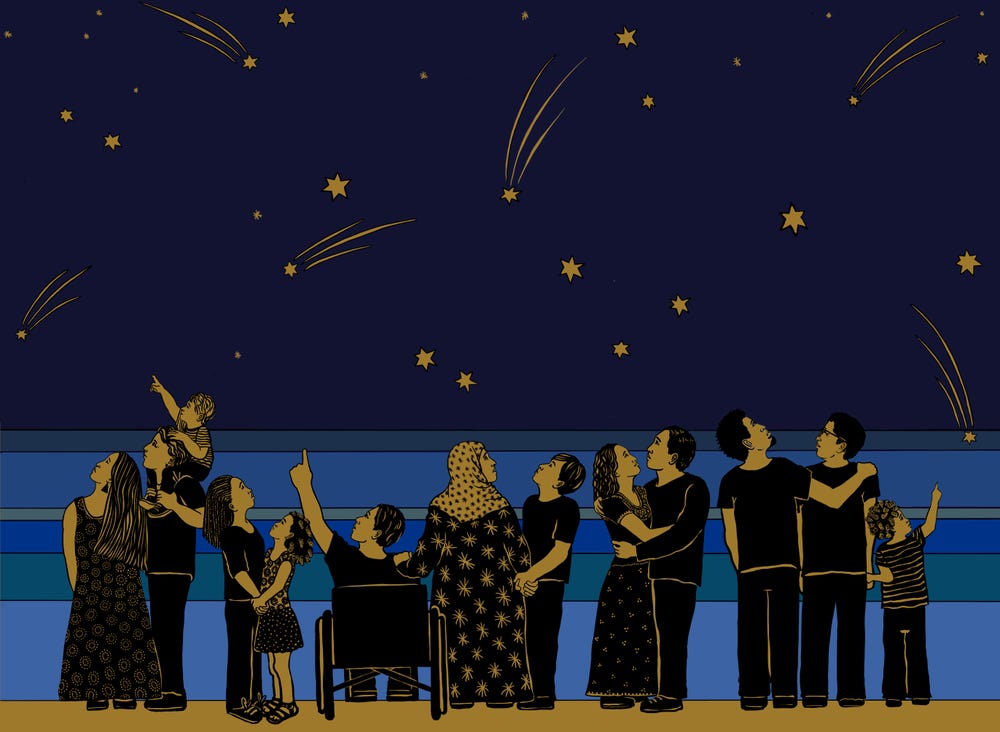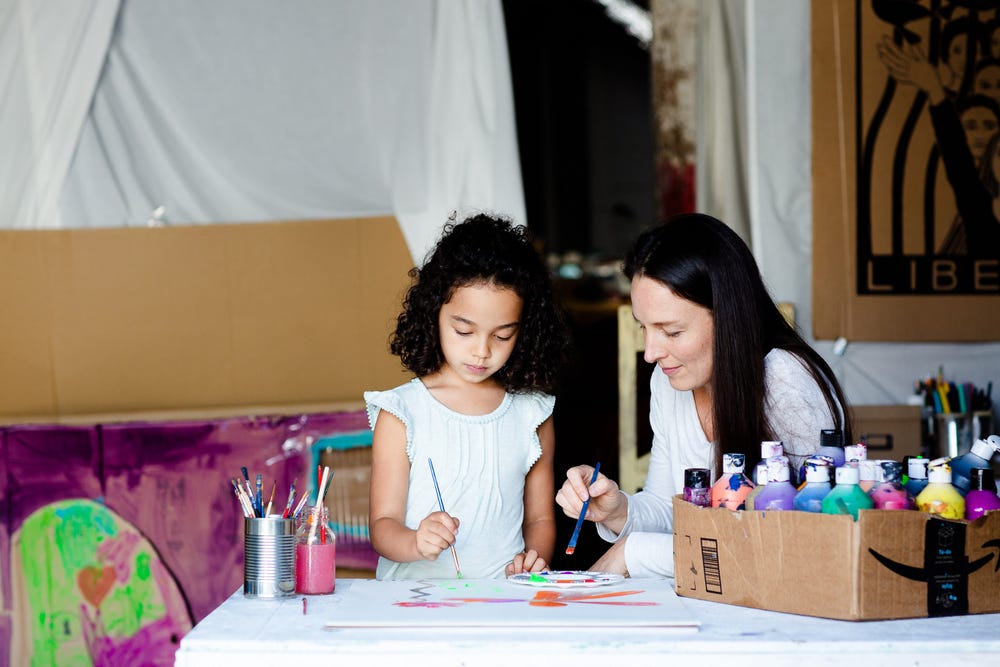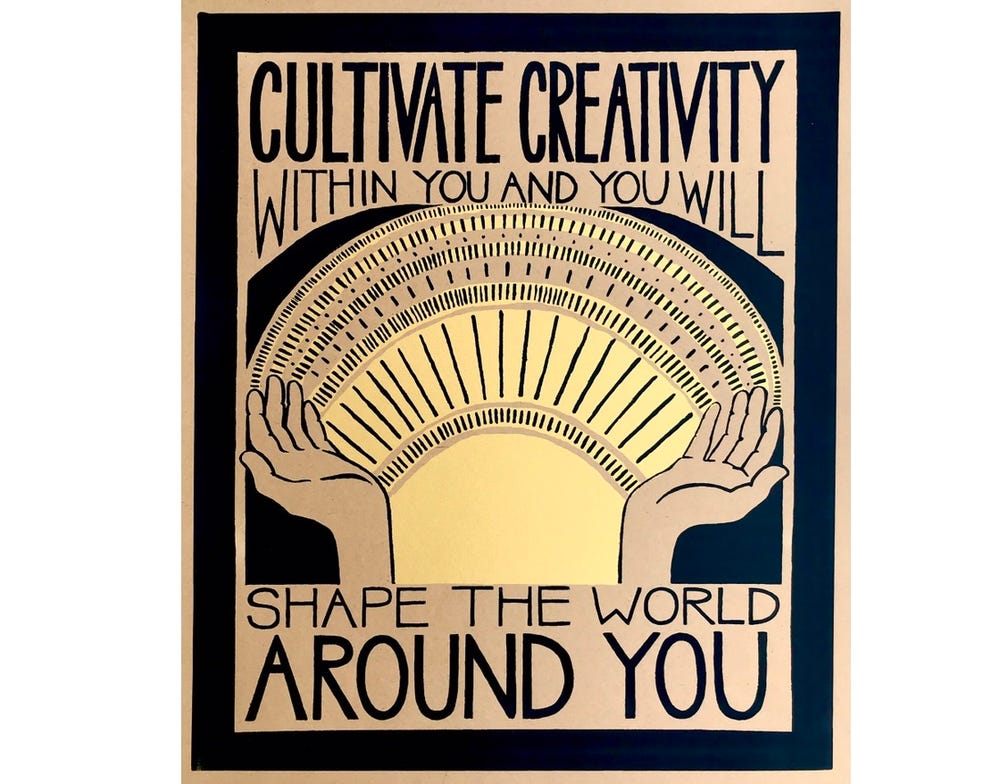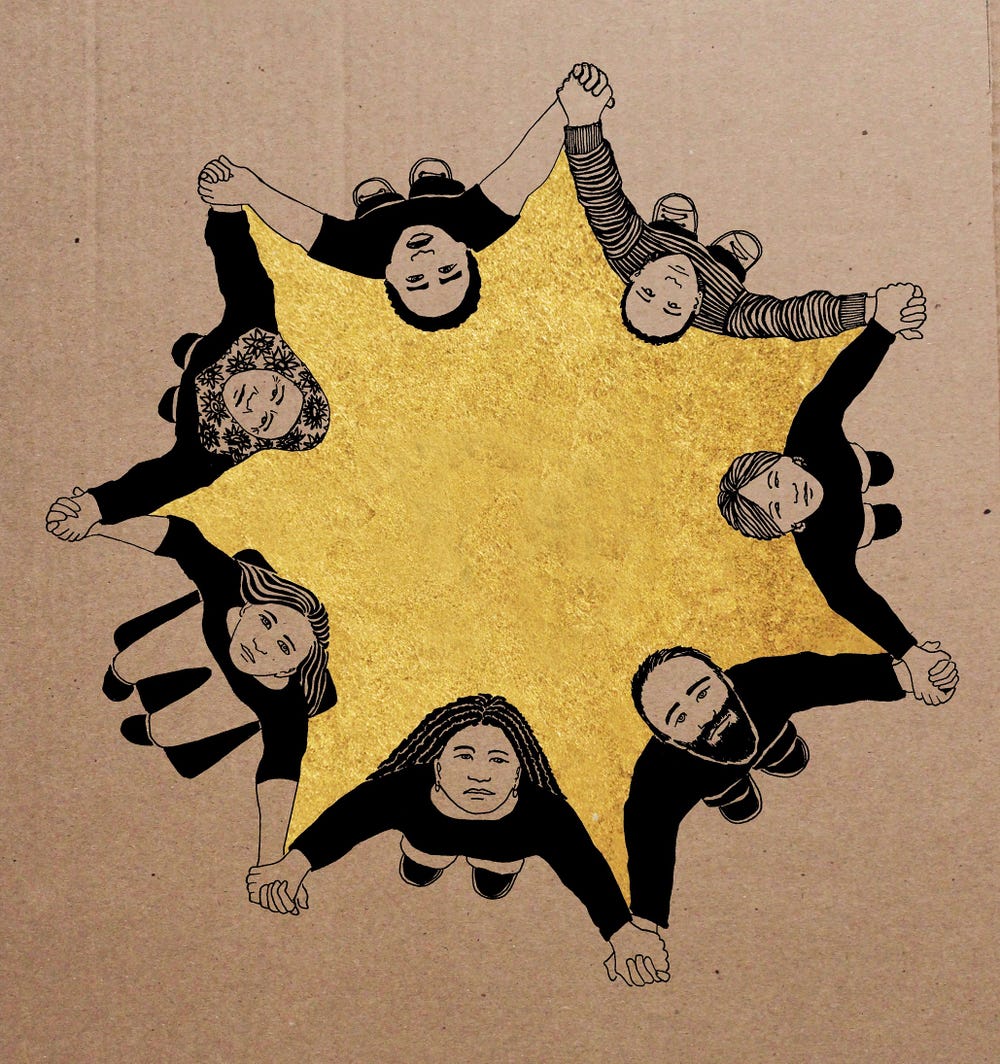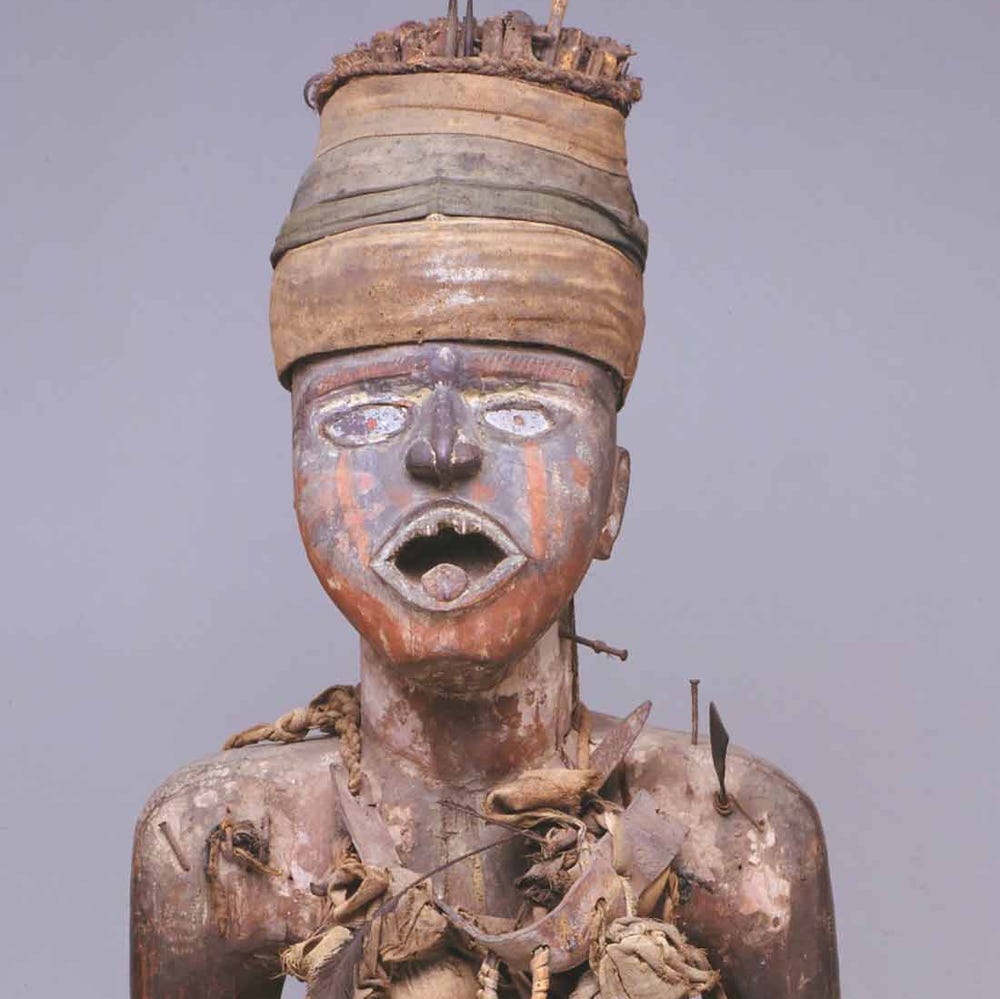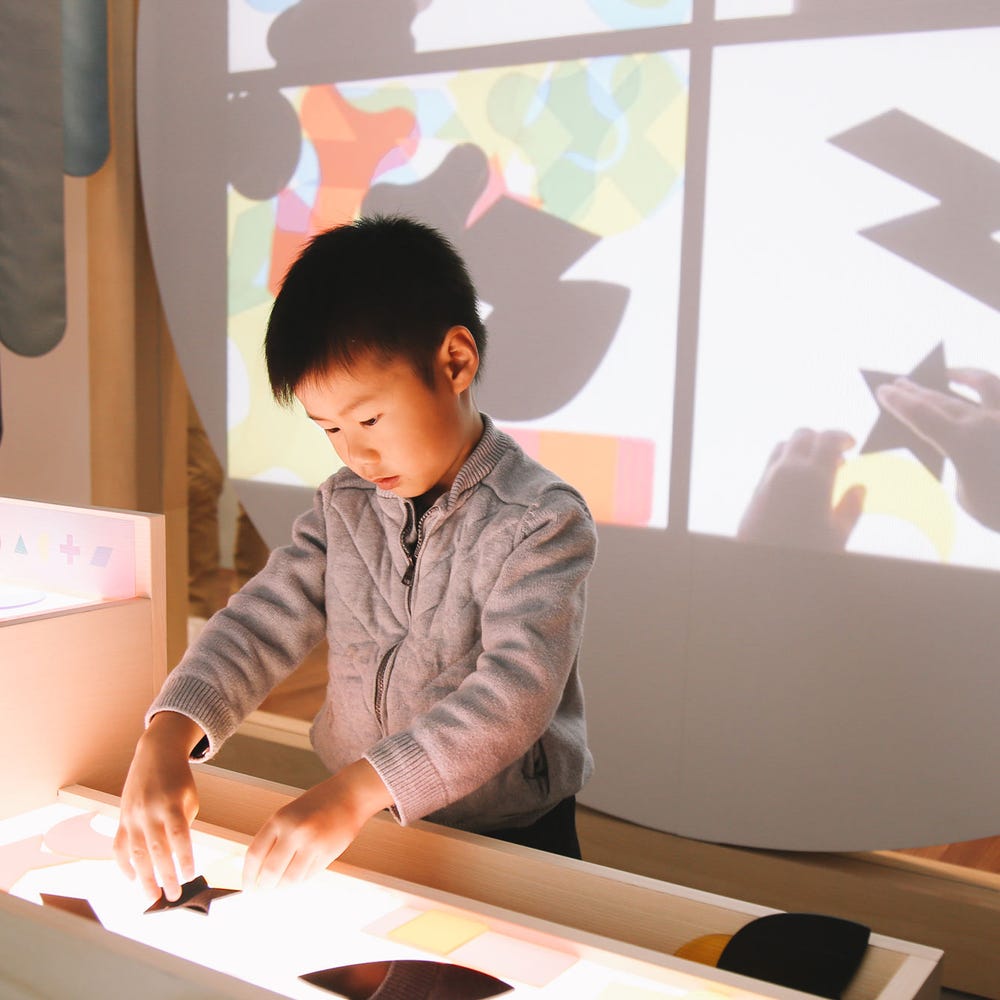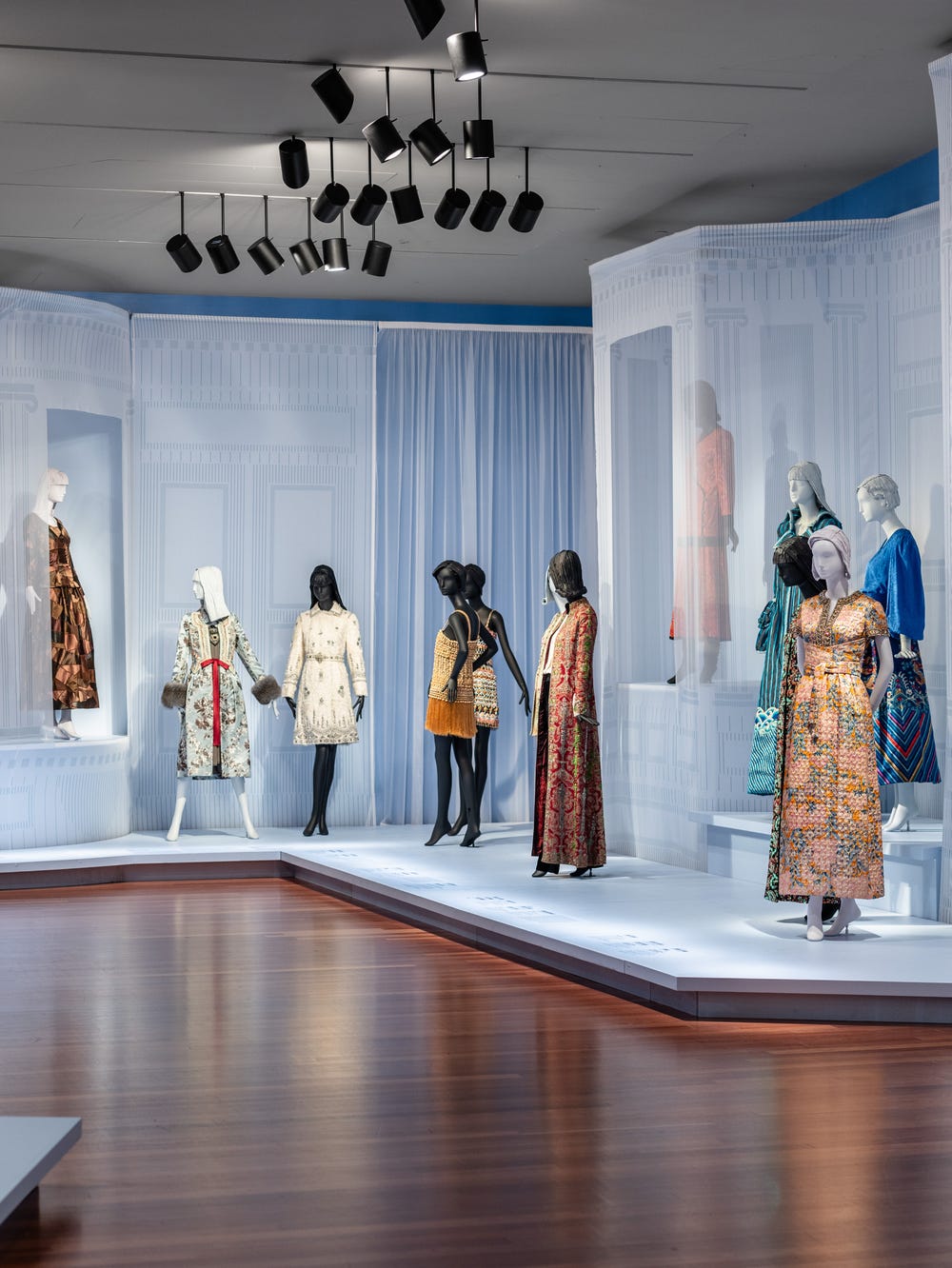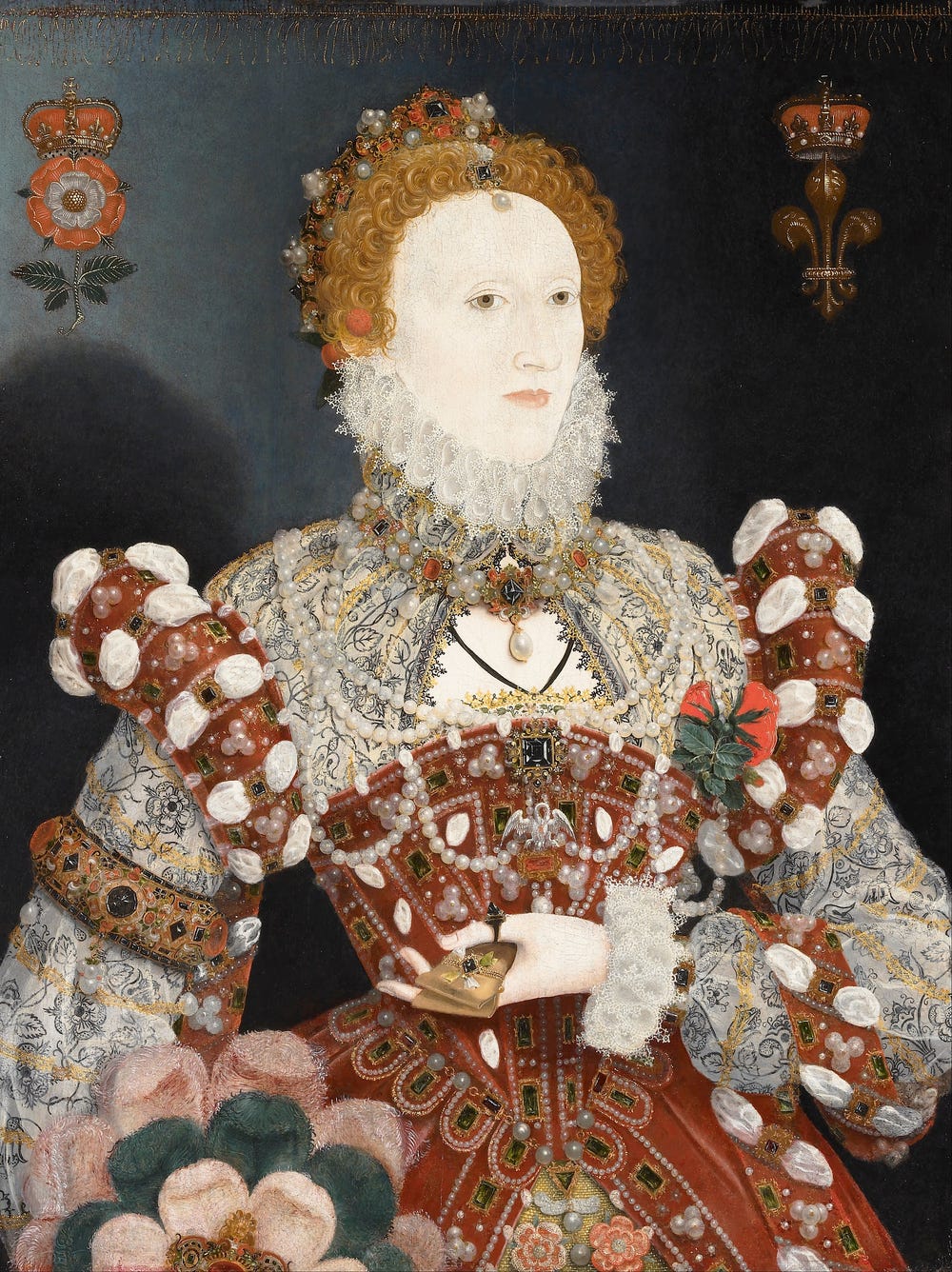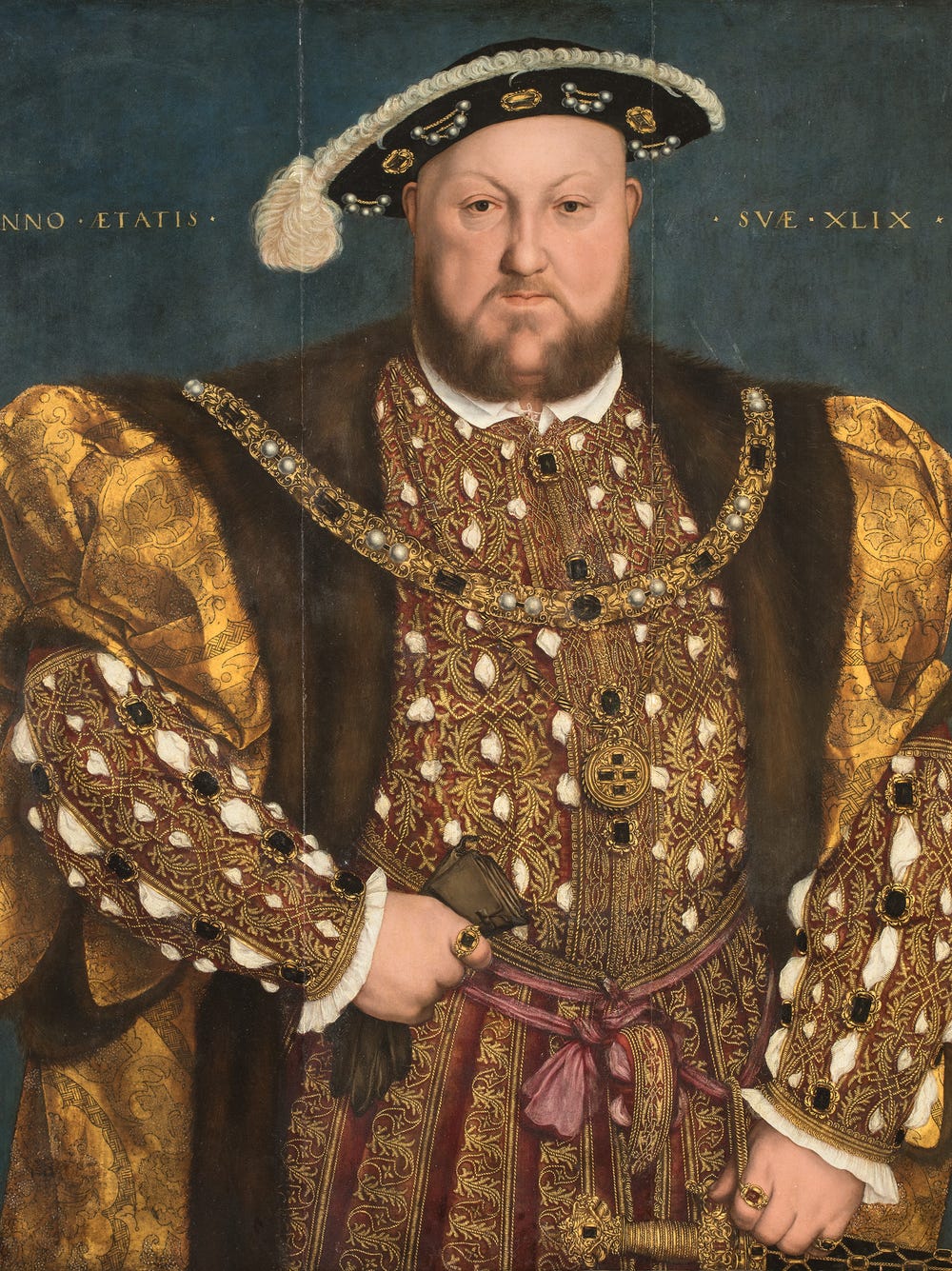Jen Bloomer, Together Under the Stars, 2020. Digital painting adapted from acrylic mural. Image courtesy of the artist
As a white mother of white kids, I’ve worked to bring my learning about racism home, and in my position as the manager of Family Programs, I’m learning what kinds of changes an anti-racist art curriculum will bring to our art studios and galleries. I was thrilled to interview Jen Bloomer, of Radici Studios, one of the facilitators of the Museums’ family workshop series, Doing the Work Together: Becoming an Anti-Racist Family, to explore the scope of Bloomer’s anti-racist work and gain insights as a caregiver.
Ariana Bayer: You have taught all ages, from teens to toddlers, in classroom and community settings. What brought you to practicing anti-racism in your current art-making and teaching?
Jen Bloomer: As an artist who has painted, taught, and facilitated art in so many different communities around the world, I have always believed in the power of art to bring people together across differences. Fascinated in the science behind creativity, I completed my masters in expressive arts therapy and found so many applicable ways that the arts can be utilized outside of a typical therapeutic context to heal issues facing our communities. While I have always felt called to do work in the world that promotes equality, in becoming a mother to mixed-race kids, anti-racism work has taken a place at the forefront of my personal and professional life. It has felt necessary to ensure I am doing the ongoing work of understanding my own identity as a white woman so that I can better support my kids on their own journey with theirs. The 2016 election was a real wake-up call to me to dial up the work I had been doing. It motivated me to become more outspoken, action oriented, and focused in using my art, my network, and skills to specifically address racism.
Jen and her daughter at Radici Studios. Image courtesy of Lila Grey Photography
AB: For caregivers who may be wondering, why art and anti-racism?
JB: To me, the arts are a beautiful entry point for addressing a complex topic such as anti-racism. They hold the power to shift the back and forth intensity of a typical conversation and create more spaciousness for people to process and take in information. Through art, kids and adults use the creative part of their brain to tap into their innate sense of self-expression and reflection, opening up new ways of thinking. While even the word “racism” can increase blood pressure or set some on the defensive, the arts can ground us and provide a less reactive starting point. Others get stuck in the intellectualization of anti-racist work, reading book after book, and the arts provide a tangible way to integrate feelings and move towards action. As anyone who has been brought to tears by music, the gift of a child’s drawing, or by watching a powerful play knows, the arts have the capacity to stir emotional responses that go beyond words to move hearts and change minds.
AB: How do you define anti-racism for families?
JB: For me anti-racism is an ongoing look at our own identities as individuals and as a family unit and grounding in a solid understanding of who we are and where we come from. It is about taking action out in our communities to address inequity issues and ensuring we keep looking inwards and outwards.
Jen Bloomer, Together Under the Stars, 2020. Digital painting adapted from acrylic mural. Image courtesy of the artist
AB: What are common questions families often bring to your workshops?
JB: The two most common questions I get from white parents in my workshops are either along the lines of “Am I doing too much or not doing enough?” Parents come in saying, “Racism is scary. My child is so young, I don’t want to scare them by sharing the realities of what’s going on in this country, shouldn’t I wait to tell them about it when they are older?” Or on the other side of the spectrum, I hear, “I talk to my kids constantly about everything that is going on, I read them all the books, I never feel like I am doing or saying enough about how bad things are and how bad racism is, but they seem overwhelmed and scared off by the topic now, what should I do?” I think the answer lies somewhere in the middle. I think we absolutely need to start talking to kids about race from the very beginning, but if we end up talking at them, or lecturing them, instead of connecting with the relevant pieces in their lives and listening to their experiences, it can backfire and keep the child from wanting to engage in further conversation. This is another reason I love using art. It helps us engage in conversations with metaphor and by following the child’s curiosity. Most kids are naturally excited about art, so it is a gentle way in.
Jen Bloomer, Cultivate Creativity, 2019. Acrylic and Sharpie on cardboard. Image courtesy of the artist.
AB: What might be the potential of the platform of art museums for anti-racist learning?
JB: Museums are institutions that are seen as a respected educational resource and a source of creative inspiration. They reach so many families and members of the community of all ages. Because of this, they hold amazing potential to engage large sectors of the population in the work of anti-racism.
Online platforms allow for people to engage with art even when museums are not open, which is wonderful, especially in a moment like we are in. That being said, as I was researching your museum’s collections for self- portraits to use as examples for this workshop, there was very little art represented by women and even less by BIPOC. Art is a voice, a window into a story, a representation of a way of living in the world, and the story of who we are collectively is incomplete without equal representation of all.
AB: Knowing that anti-racism is an ongoing practice, what are questions or reflections you find yourself returning to with your family?
JB: A question I always return to is, “Who am I? Who are we as a family?” Continuing to understand and ground in my own identity and my family’s identity and values helps ensure our integrity as we work to create change in our community. I see anti-racism as an upward spiral. We start with better understanding ourselves, then expand to others in our close community, and then those in the larger society, and eventually we come back around to reevaluating our identity as we change and evolve. It’s an upward spiral of growth.
Jen Bloomer, The Circle, 2018. Mixed media. Image courtesy of the artist
AB: Could you recommend a book, an activity, and a video to check out with my kids this week?
JB: There are so many amazing resources to check out these days, but here are some of my favorites:
- Read Say Something, by Peter Reynolds with your kids and talk to them about different ways they can use their voice to speak up.
- Listen to the Code Switch Podcast with your older children (or after kids are asleep) for powerful reflections on race in this country.
- Find useful resources and great webinars on the Embrace Race website.
AB: Thank you, Jen!
Interview by Ariana Bayer, Manager of Family Programs, Fine Arts Museums of San Francisco
Learn more about Jen Bloomer’s workshops.
Explore our Family Programs, including the Doing the Work: Becoming an Anti-Racist Family series.
Read more about our Anti-Racism Work.
